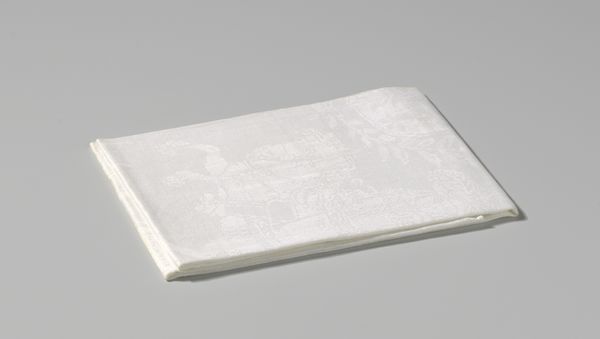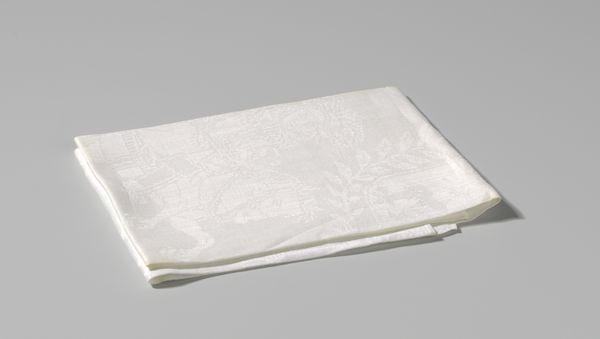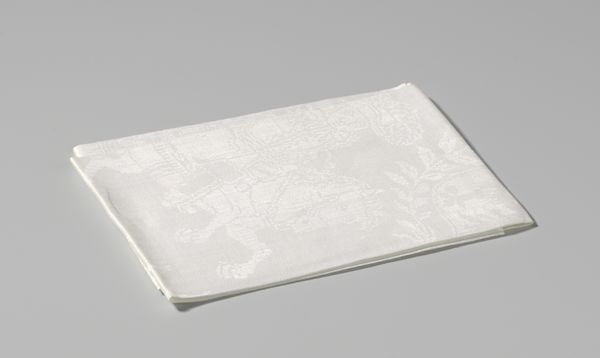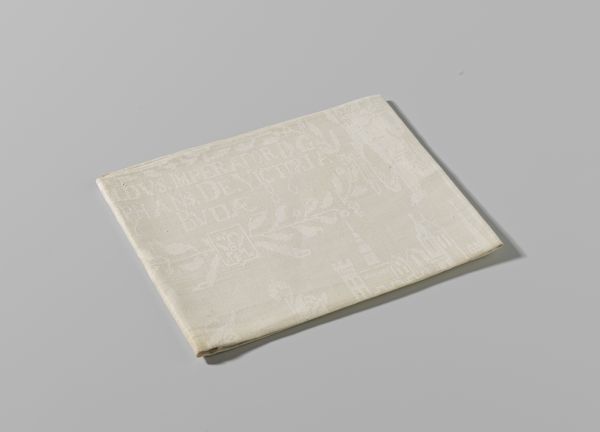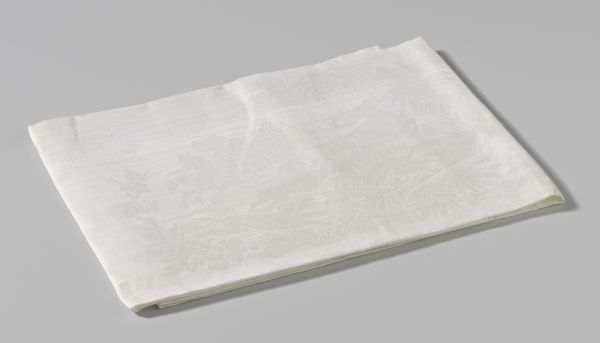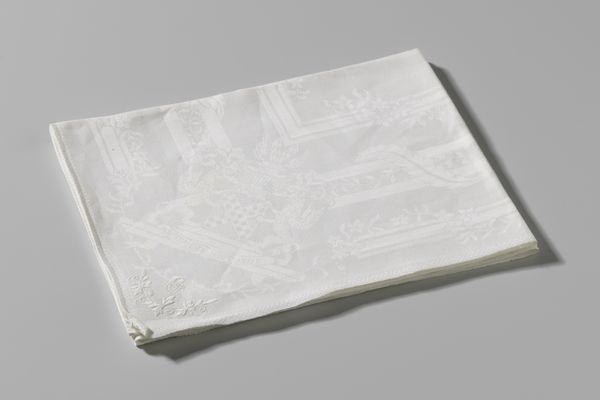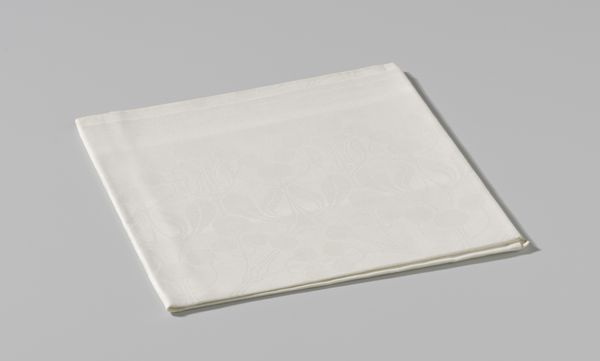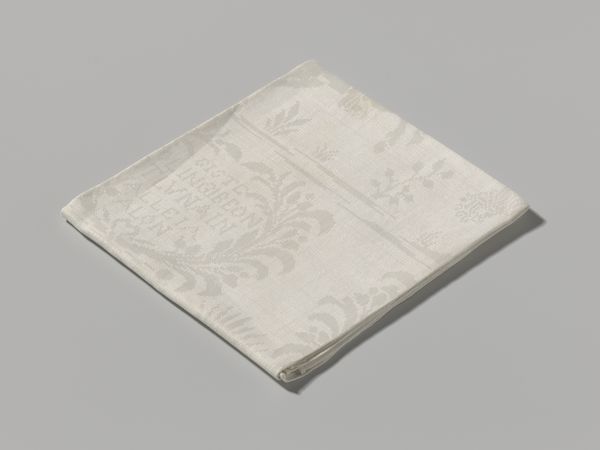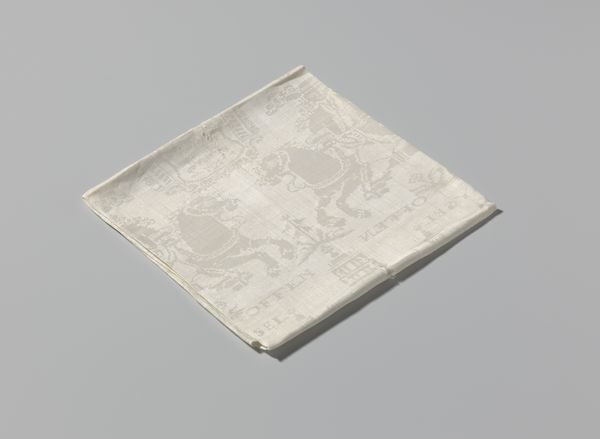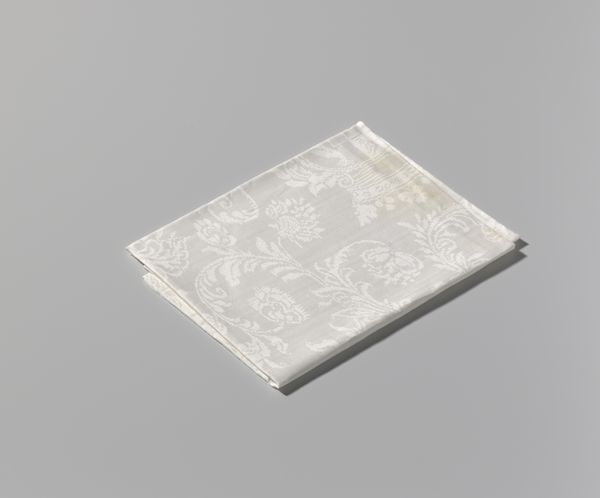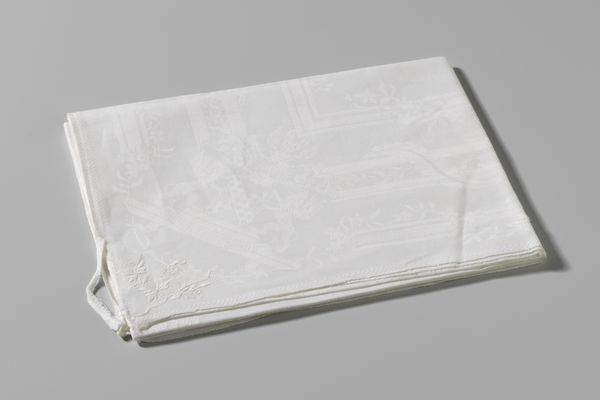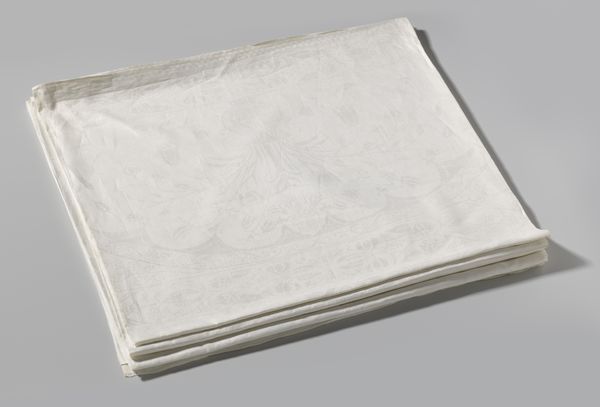
weaving, textile
#
weaving
#
textile
#
decorative-art
Dimensions: height 91 cm, width 72 cm
Copyright: Rijks Museum: Open Domain
Curator: Here we have an intricately woven textile piece; a serviette, or table napkin, dating back to 1704. What strikes you initially about this artifact? Editor: Well, its subtle, almost ghostly quality is what catches my eye. It’s unassuming yet undeniably regal in its design. Curator: Precisely! It features a depiction of Philip V of Spain, subtly woven into the fabric, doesn't it? Its purpose, of course, extends beyond mere functionality. The very act of displaying this type of item became tied into power dynamics of the time. Editor: Absolutely. You can imagine how it felt, as a guest, to have such an item at one's place at the table. Was it purely symbolic? Or was its physical substance meant to showcase power as well? Did this become a matter of domestic labor for households during this era? Curator: A very insightful question. The material itself—most likely linen or a fine cotton blend—would speak to a certain level of affluence. Moreover, we should be thinking about the weaving and production, the artisanal skills involved in creating this delicate pattern. The labour involved in weaving such intricate detail would have been considerable. It bridges craft and what we might now call high art, don’t you agree? Editor: It’s interesting to consider how access and utility shifted over time too. Was this pattern used in homes, or institutions with colonial connections? To have this object survive gives a real charge about those social circles of its time, and the image the owner wished to communicate. Curator: Exactly. Objects such as this can unlock our understanding of consumption. So what began as an everyday object becomes a symbol and a window into an historical time capsule. Editor: Indeed. This textile napkin shows that even seemingly minor domestic artifacts reflect intricate webs of societal importance and artistry. It is an emblem of history, woven into fabric.
Comments
No comments
Be the first to comment and join the conversation on the ultimate creative platform.
